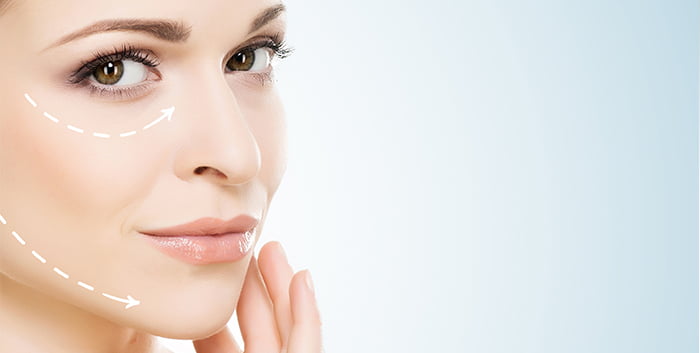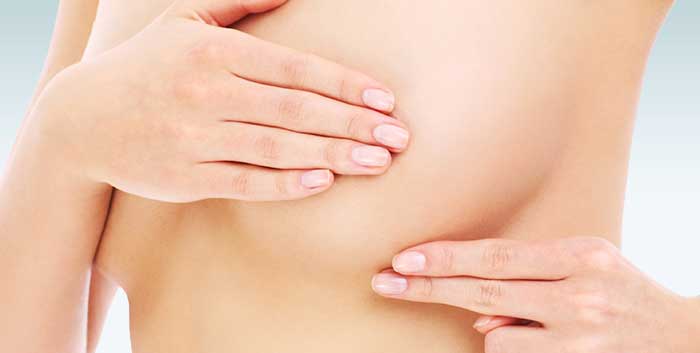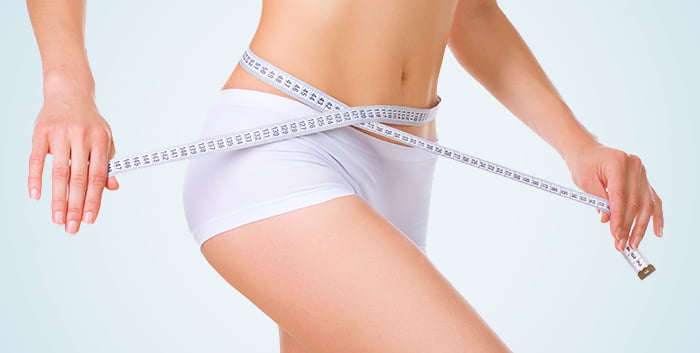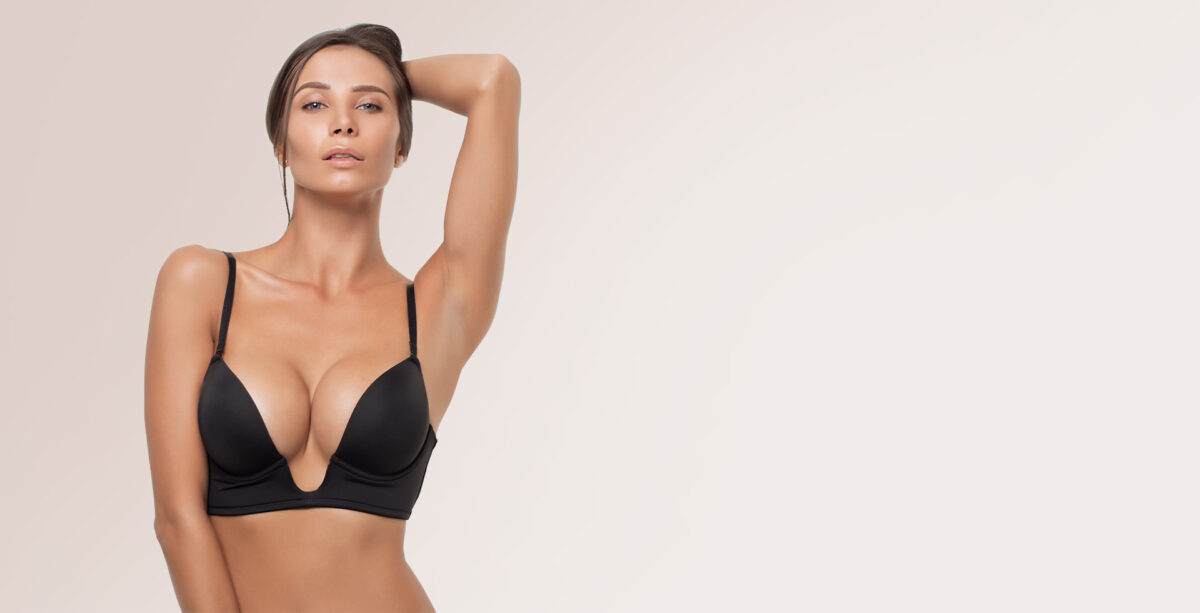
Cosmetic surgery for breast augmentation Tunisia is generally indicated in the case of breast hypotrophy. This lack of development of the breast can have several reasons from which we distinguish the genetics little create in some women a lack of confidence especially with this unfeminine appearance of the breast.
To remedy this problem of female breast volume the placement of breast prostheses often pre-filled with silicone gel is the most sought solution.
Indeed, this act allows to increase the volume of breasts too small in their size with the aim of obtaining a new curve able to improve in turn the harmony between the breasts and the rest of the silhouette.
Table of Contents
ToggleBetter define “Breast Augmentation”:
Breast augmentation is one of the most sought-after operations in cosmetic surgery. In fact, it allows to treat a breast the absence or lack of development of the chest that patients who have a hypotrophy usually suffer.
The person who develops breast disease and has a breast
damaged by factors such as age or pregnancy may opt for a breast augmentation but which is associated with a facelift to treat the relaxation.
In particular, this operation is an excellent alternative for any woman who suffers from the following malformations:
- A sagging of the chest
- A mammary agenesis or «absence of breast»
- A breast aplasia in the form of small breasts
- A breast asymmetry, one breast smaller than the other,
- Cylindrical tuberous breasts
The most common questions when it comes to breast augmentation:
You want to do a breast augmentation and you are always hesitant, the idea of placing prostheses (foreign body) you worry, you want to know everything about the possible complications after this kind of operation and ask yourself a lot of questions about the surgical follow-up? You will find below all the answers to your questions in order to have the maximum details about this operation before starting
- Who is breast augmentation by implants and how do I know if I am a good candidate for this kind of surgery?
- Why choose chirurgia tours for breast augmentation?
- What is the price of a breast augmentation in Tunisia?
- What happens during the preoperative consultation before breast augmentation by prostheses?
- What are the different stages of breast augmentation with implants Tunisia:
- The incision techniques practiced in Tunisia and what are the most recommended?
- What are the surgical outcomes of breast volume augmentation by implants?
- What are the possible complications after a breast augmentation with prostheses:
- Is there really any specific risk associated with the placement of breast prostheses?
- What is the result of breast augmentation in Tunisia?
Who is breast augmentation by implants for and how do I know if I am a good candidate for this type of surgery?
Breast augmentation surgery with implants is ideal for women who:
- Has a problem with breast development
- Who believes that his breasts are disproportionate to his figure.
- Who suffers from a lack of breast volume caused by malformation or asymmetry.
- Who is embarrassed by the absence or loss of her cleavage due to pregnancy or weight loss,
- Wishes to accentuate the femininity of her breast with a little more volume.
- Wants to fill the upper part of her breasts.
The surgeon’s diagnosis will determine whether or not the patient actually has an indication for this surgery
Why choose chirurgia tours for breast augmentation?
Breast augmentation is one of the most common cosmetic surgeries performed by our surgeons.
The choice made on our organization and the confidence given by our patients to this kind of surgery is due to the transparency we have justified in all the details of their care processes from sending the file until the final result.
What we offer our patients for this type of surgery:
- Plastic surgeons who excel in breast surgery (scar too fine- wise advice during preoperative consultation for the choice of size and profile of prostheses.
- Excellent support during the preparation of the care file to eliminate all risks of complications and surprises.
a thorough post-operative follow-up until the final result.
Breast augmentation Tunisia price:
The price of a breast augmentation Tunisia is competitive, in fact, the price is 60% cheaper than in France.
- The offer is all-inclusive and includes other services such as:
- Welcome at the airport by an assistant driver,
- Operating room expenses.
- The fees of the plastic surgeon and anaesthetist,
- Consultations before and after surgery,
- Full care in the full-board clinic
- A convalescent stay in a 5-star hotel.

Breast hypotrophy is in most cases poorly accepted physically and psychologically by the patient who sees in it a violation of her femininity,
Dr Atef Ghedira therefore proposes to accompany the patient in making the best choices if she wishes to increase the volume of a breast considered too small through the implantation of prostheses.
What happens during the preoperative consultation before breast augmentation with prostheses?
Before a breast augmentation operation with prostheses, the placement of the indication for surgery must be done by his surgeon before moving to Tunisia. The surgeon explains to the patient all the possible options (type of scar, shape of the prosthesis, size and position) according to the patient’s own morphology as well as his expectations.
A questionnaire form on her medical and family history, future plans for childbirth and breastfeeding, as well as her tobacco consumption must be completed accurately and accompanied by face photos, breast profile.
A contact (by phone or Wattsapp) with the health assistant of the agency is necessary to ask all his questions and talk about the different expectations of the patient.
Perform breast imaging by mammography or ultrasound
Perform blood tests to check for contraindications to the operation.
Upon arrival on site a pre-operative consultation will take place: it will be dedicated to review with the surgeon all the details related to the operation.
A fitting of the implants in its different volumes with a bra intended for this purpose will be made on site during this operation.
What are the different stages of breast augmentation with implants Tunisia:
In order to ensure a smooth procedure, it is imperative to follow certain preoperative instructions during the 2 weeks preceding the surgery:
Stop smoking to avoid worsening the risk of postoperative complications,
Do not take aspirin.
The breast augmentation operation by prostheses takes place under general anesthesia, it lasts between 60 minutes and 2 hours, 30 depending on the surgical technique adopted in terms of the chosen incision mode, location of the prostheses and the need for associated plastic surgery as well as the need to perform additional procedures during a 24- to 48-hour clinical stay.
The plastic surgeon performs this operation in the following steps:
Make pre-operative drawings,
Make cutaneous incisions at different locations: around the areola, on the armpit area or in the under-breast groove,
Implant the implants in front of the pectoral muscle or behind the pectoral muscle,
Suture incisions with absorbable thread,
Apply a shaping dressing at the end of the operation.
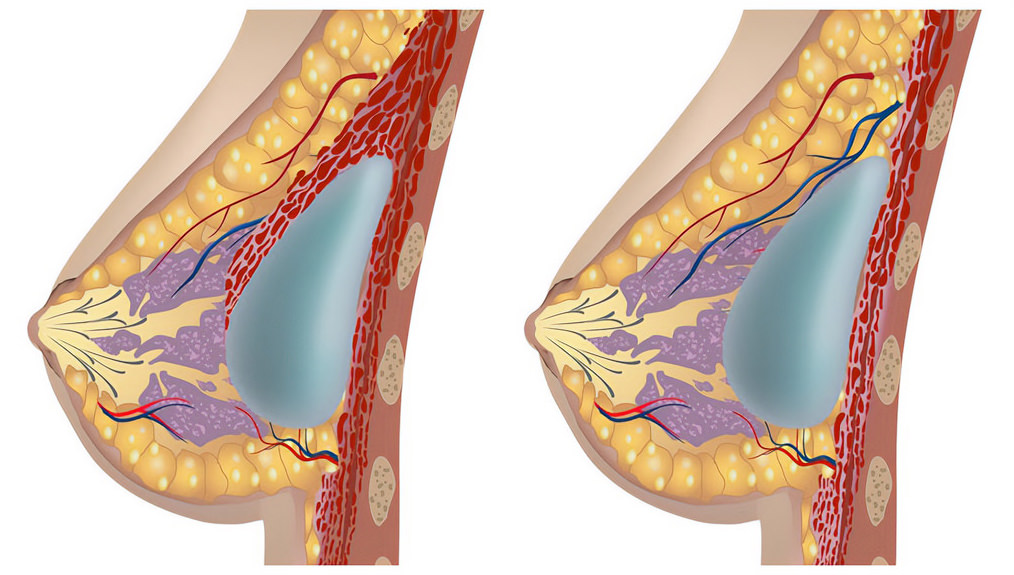
Incision techniques in Tunisia:
In practice, the plastic surgeon chooses between three incision techniques practiced in Tunisia, namely:
The areolar route (around the areola):
The axillary tract (in the armpit area):
The submammary tract (in the submammary groove):
Surgical follow-up breast augmentation by implants:
Following an operation to increase breast volume by implants, any patient should expect the following surgical outcomes:
Moderate pain that is calmed by taking simple analgesics,
Appearance of bruises and edema on the breasts and which disappear after 2 weeks,
Wearing a support bra without braces, day and night, for 4 weeks,
The resumption of any professional activity is allowed after 1 week,
Do not return to sports after 6 weeks,
Do not expose yourself to the sun and UV for the first 6 months to avoid dyschromia.
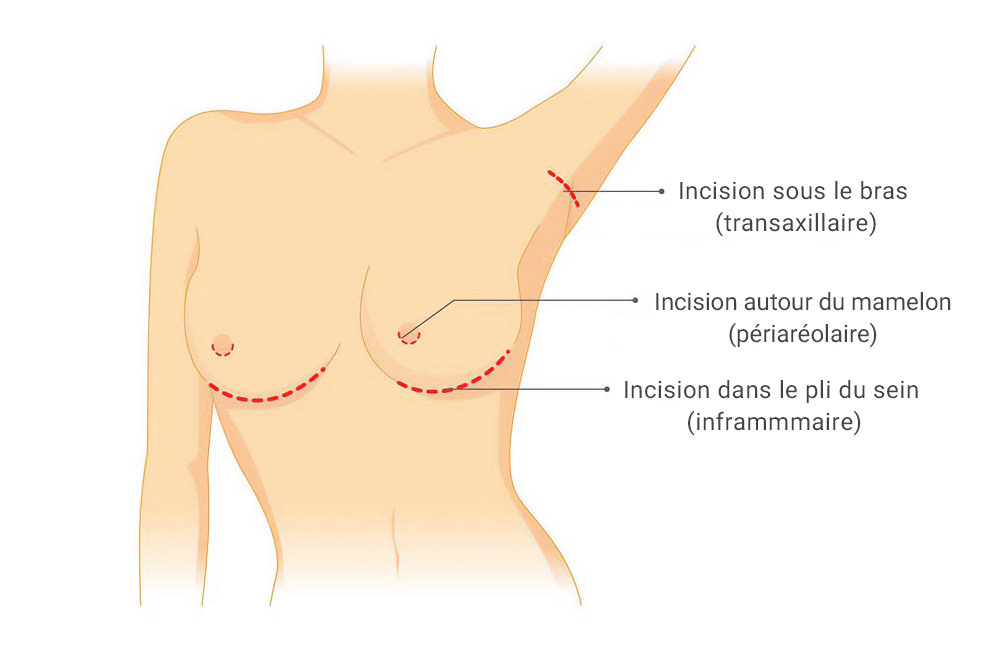
The result imperfections of a breast augmentation.
Occasionally, certain imperfections can be detected after a breast augmentation, for example:
A volume asymmetry poorly corrected despite the placement of implants in different sizes,
A perceptibility of the prosthesis by touch,
A worsening of breast disease, especially when the implants are large.
Complications after breast augmentation by prosthesis:
Following a breast augmentation with prostheses, certain complications may occur during the postoperative period know:
A hematoma
An infection of the implants,
A residual volume asymmetry,
Excessive firmness.
Impaired sensitivity, especially in the nipple.
Abnormalities of healing,
A deformation of the chest wall.
The specific risks associated with breast prostheses:
An appearance of waves as a fold formation under the effect of the flexibility of the implants responsible for the wrinkle envelope, or folds felt both to the touch and visible under the skin,
Shells due to the presence of a foreign body in the body that only isolates it from surrounding tissues by forming an airtight membrane that surrounds the implant.
Depending on the intensity of the phenomenon, it may be followed by a firming of the breasts or a visible deformation that translates into a hard and painful sphere.
A rupture that may occur in the form of loss of tightness of the envelope due to violent trauma,
A displacement or malposition that affects the shape of the chest that can be corrected surgically,
A rotation that remains rare but whose occurrence affects the aesthetic result,
A deformation of the chest wall, in fact, at the time of removing the prostheses with fibrous shells that have been printed into the tissues, leave a deformation of the wall in question,
A late effusion around the implant.
Result of breast augmentation in Tunisia:
After a delay of 3 months, any patient can appreciate the final aesthetic result of breast augmentation by prosthesis, the time it takes for the chest to regain its flexibility and the prostheses to stabilize.
This intervention brings a clear improvement in terms of volume and shape of the breasts, with very discreet scars.
It should be noted that the extra volume of the breasts is also beneficial for the figure by allowing the patient to benefit from greater freedom of dress.
Thanks to the breast augmentation by prosthesis, every woman regains her femininity which affects also its psychological aspect.
Chirurgia Tours answers your most frequently asked questions:
A shell on breast prosthesis is a complication that manifests itself in thickening and retraction of the membrane surrounding the implant. This can lead to breast deformation, hardness and pain.There is no effective medication or massage to prevent or treat cockles. The only possible treatment for this type of complication is surgical. It involves changing the implant, sectioning or removing the shell, and modifying the implantation box. The risk of relapse of the hull is higher after a surgical recovery.
Breast implants are medical devices that increase or rebuild the volume of breasts. They are composed of a soft shell and silicone gel or saline. The life span of breast implants is not fixed and varies between individuals and types of implants. On average, they are estimated to last between 10 and 15 years. The breast prosthesis is changed in case of a problem (rupture, shell, infection, etc.) or at the request of the patient if she wishes to change the size or shape of her breasts.
A breast augmentation is a surgical procedure that requires special care for the scars. Depending on the technique used, the scars may be located around the areola, under the arm or in the crease below the breast. To promote good healing, follow the surgeon’s instructions and perform regular local care. The care consists of cleaning the scar thoroughly, disinfecting it with an antiseptic and protecting it with a bandage. The duration of treatment is approximately 3 weeks. It is also recommended to use a healing cream ( kelo cote) after complete healing to soften and attenuate it . Exposure to sun, tobacco, alcohol and irritants that may affect the quality of the scar should also be avoided.
u003cpu003eLa chirurgie deu003cstrongu003e correction des seins asymétriquesu003c/strongu003e est une intervention qui consiste à rétablir l’harmonie entre les deux seins en termes de volume, de forme, de position et d’aspect. Il existe plusieurs techniques possibles en fonction du type et du degré d’asymétrie. Par exemple, l’ augmentation mammaire par prothèse ou par u003ca href=u0022https://www.chirurgia-tours.com/lipofilling-seins-tunisieu0022u003elipofilling (injection de graisse)u003c/au003e, la u003ca href=u0022https://www.chirurgia-tours.com/reduction-mammaire-tunisieu0022u003eu003cstrongu003eréduction mammaireu003c/strongu003eu003c/au003e, le u003ca href=u0022https://www.chirurgia-tours.com/lifting-seins-tunisieu0022u003eu003cstrongu003elifting mammaireu003c/strongu003eu003c/au003e ou à une combinaison de ces méthodes. Le choix de la technique dépend du sein qui sert de modèle (celui qui convient à la patiente ou celui qui doit être modifié) et du résultat souhaité par la patiente. L’objectif est d’obtenir des seins symétriques et adaptés à la morphologie et aux désirs de la patiente, tout en minimisant les cicatrices.u003c/pu003en
The choice of cup size for breast augmentation depends on several factors, such as the patient’s morphology, expectations, type and volume of implants. There is no universal rule for determining the ideal size, but there are ways to estimate the desired result.During your pre-operative consultation, your plastic surgeon will advise you on the type of implant that best suits your figure and desire . You can also try on external implants to get an idea.
Round prostheses and anatomical prostheses are two types of breast implants that differ in their shape and effect on the chest. Round prostheses have a hemispherical shape and provide more volume in the upper part of the breast, which gives a pigeonnant appearance to the décolleté. Anatomical prostheses have a pear or water drop shape and simulate the natural breast shape, which is more voluminous in the lower part. The choice between the two types of prosthesis depends on the morphology of the breasts, the patient’s expectations and the surgeon’s advice. Round prostheses have the advantage of limiting the risks of breast rotation and deformation, while anatomical prostheses offer a more natural and discreet result.
7- Can the placement of breast prostheses counter-indicate a subsequent pregnancy and breastfeeding?
The placement of breast implants is not a contraindication to subsequent pregnancy and breastfeeding. The prostheses are located behind the mammary gland or pectoral muscle and do not interfere with milk production and ejection. Most women with breast implants can breastfeed normally, except when the milk ducts are cut during periareolar implantation. Breast implants also have no effect on the baby’s health because they are inert and insensitive to hormonal changes. However, pregnancy and breastfeeding may change the shape and volume of the breasts, which may require re-surgery after weaning.
A breast augmentation shell is a rare complication that manifests itself in an excessive inflammatory reaction of the body to the presence of the implant. This is a thickening and retraction of the membrane that normally forms around the prosthesis to isolate it from surrounding tissues. The shell may cause deformation, rise, hardness and pain of the affected breast. The shell is classified in four stages according to Baker’s classification, ranging from stage 1 (isolated pain without contracture or deformation) to stage 4 (painful, retracted and hard breast). The treatment of the shell is surgical and involves removing or severing the fibrous membrane and changing the implant if necessary.
Breast implants are prostheses that can be placed in different places during breast augmentation surgery. There are four types of breast implant placement according to the chosen anatomical plan:
The retro-glandular position: the implant is placed behind the mammary gland and in front of the pectoral muscle. This position is suitable for patients who have enough breast tissue to cover the implant and moderate breast pouts.
The retro-muscular position: the implant is placed behind the pectoral muscle and in front of the ribs. This position is preferred to patients who have little breast tissue, who want a large volume or who have a prosthesis very projected forward.
The dual-plane position: the implant is placed on two anatomical planes, the upper part behind the pectoral muscle and the lower part behind the mammary gland. This position combines the advantages of the previous two positions and is indicated for patients who have a slim figure and low breast tissue mass.
The retro-facial position: the implant is placed in front of the pectoral muscle but behind a layer of tissue called fascia. This position is less used than the others and offers an intermediate result between the retro-glandular and retro-muscular positions.
The choice of breast implant position depends on several criteria, such as anatomy, desired volume and shape of the implants. Your plastic surgeon will advise you on the most suitable position for your case during the pre-operative consultation.
The Round Block is an incision technique that consists of making a circular scar around the breast areola. It is used in several types of breast surgery, including breast augmentation by prosthesis or lipofilling. The Round Block has several advantages: it allows to reposition the areola if it is too low or too wide, it limits the visibility of the scar by confusing it with the natural pigmentation of the areola, and it avoids vertical or horizontal scars that can be more unsightly. The Round Block may be indicated for patients who wish to increase their breast volume while correcting a slight breast loss (sagging). The Round block technique is not a good indication for patients who have a large chest or who want too much visible volume, because there is a risk of widening the scar and loss of breast curvature.
Like any surgery, breast augmentation with prostheses can cause postoperative pain. These are variable depending on the sensitivity of each patient, the volume and type of implant, and the position of the implant. They are usually moderate and well relieved by analgesics prescribed by the surgeon.
The pain is mostly present in the first days after surgery. They are mainly manifested by muscle cramps in the chest, which can radiate to the shoulders or arms. They are more intense when the implants are placed behind the pectoral muscle, because it must adapt to the presence of the implant. They can also be accentuated by arm or chest movements.
The pain gradually subsides after about a week. They may be accompanied by edema (swelling), bruising (bruises) or a change in breast sensitivity. These phenomena are normal and temporary. They disappear in a few weeks, when the tissues heal and the implants stabilize in their lodges.
u003ch2 class=u0022dt-sc-verticalu0022u003eu003ca href=u0022#u0022u003ePromotion et offre spécialeu003c/au003eu003c/h2u003enu003cimg class=u0022size-full wp-image-24484 aligncenteru0022 src=u0022https://www.chirurgia-tours.com/wp-content/uploads/2021/08/promo.pngu0022 alt=u0022Promotion et offre spécialeu0022 width=u0022500u0022 height=u0022334u0022 /u003e
u003ch2 class=u0022title-with-bg-2u0022u003eDemandez un devisu003c/h2u003e

